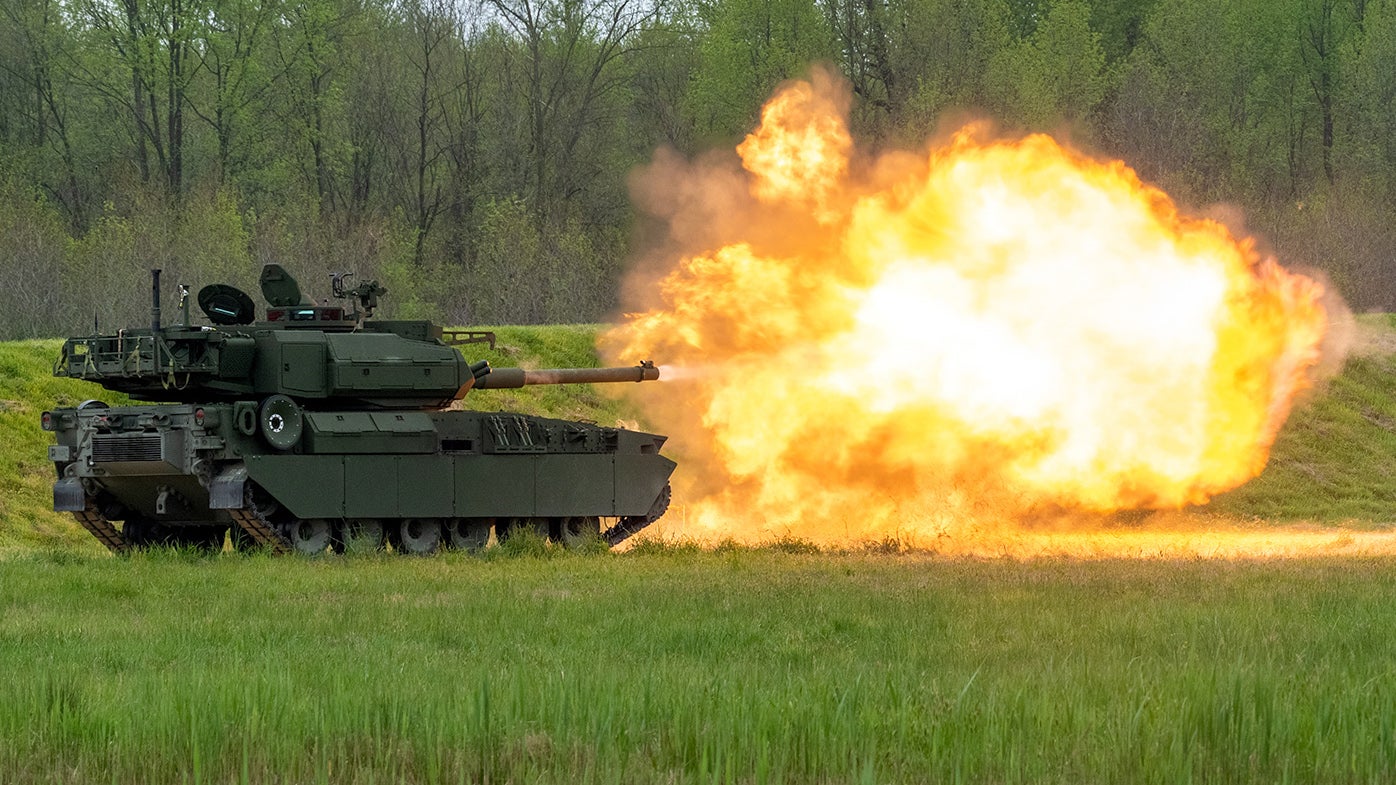Army Christens M10 Booker Combat Vehicle
Army Christens M10 Booker Combat Vehicle

Family members of two fallen soldiers were honored April 18 during a christening and dedication ceremony at Aberdeen Proving Ground, Maryland, for the Army’s newest combat vehicle.
Announced June 10 at the National Museum of the United States Army during a celebration of the Army’s 248th birthday, the M10 Booker is named for Pvt. Robert Booker, an infantryman who was posthumously awarded the Medal of Honor for actions during World War II, and Staff Sgt. Stevon Booker, an armor soldier who was killed in Iraq in 2003 and posthumously awarded the Distinguished Service Cross.
During the ceremony, Pvt. Booker’s sister, Rosella Booker-Hirsch, and multiple nieces and nephews met for the first time with Staff Sgt. Booker’s mother, Freddie Jackson, his sister, Kimberly Talley-Armstead, and several family members and friends. Together, the families christened the first production M10 Booker, named “Another Episode” after Staff. Sgt. Booker’s tank during Operation Iraqi Freedom.
Selfless service
Pvt. Robert Booker, of Callaway, Nebraska, was assigned to the 133rd Infantry Regiment, 34th Infantry Division. His unit was sent to Africa, where he served for almost a year during the Allied North African Campaign before being mortally wounded during an incursion with enemy forces.
During the battle on April 9, 1943, near Fondouk, Tunisia, the 22-year-old private braved heavy fire to cross an open field carrying a machine gun and a box of ammunition and began firing at enemy targets, according to his Medal of Honor citation.
Though he was wounded by gunfire, he continued firing his weapon and destroyed an enemy machine gun. Turning to a second enemy machine gun, he was shot again, this time fatally. Before he died, he continued to encourage his squad and help direct their fire, his citation reads.
Staff Sgt. Stevon Booker, a native of Apollo, Pennsylvania, was a tank commander with Company A, 1st Battalion, 64th Armored Regiment, 2nd Brigade Combat Team, 3rd Infantry Division, on April 5, 2003, when his platoon led a task force on a highway toward Baghdad International Airport in Iraq.
When his unit came under heavy small-arms and rocket-propelled grenade fire, the 34-year-old NCO alerted his command and encouraged his crew. He returned fire first with his tank-mounted machine gun, and then his personal weapon when the machine gun malfunctioned.
Protecting his platoon’s flank and delivering accurate information to his command during a critical and vulnerable point of the battle, Staff Sgt. Booker’s fearless attitude over the radio inspired his fellow soldiers to continue the attack, his award citation says.
Still exposed to enemy fire, Staff Sgt. Booker saw an enemy troop carrier trying to bypass his tank and destroyed it before enemy troops could dismount. He continued to engage the enemy until he was mortally wounded, the citation says.
Modernized capability
The M10 Booker is one of the Army’s first major combat vehicles produced since the 1980s. The design includes a 105 mm main gun, armor, smoke grenade launchers, blowoff panels and automatic fire suppression, intended to enhance survivability against direct and indirect fire, rocket-propelled grenades and underbody threats.
“The Army is undertaking its most significant transformation in several decades to dominate in large-scale combat operations in a multidomain environment, and the M10 Booker is a crucial part of that transformation,” said Douglas Bush, assistant secretary of the Army for acquisition, logistics and technology, in an Army news release.
To date, three production M10 Booker vehicles have been delivered to the Army. During the next several months, the M10 Booker will be involved in an operational test with the 82nd Airborne Division at Fort Liberty, North Carolina, formerly known as Fort Bragg. The first operational company of M10 Booker vehicles is set to be fielded to the division next summer.
“We will also put the vehicle through production qualification and testing in desert, arctic, temperate and tropical conditions, challenging it with obstacles like gaps and walls to scale, and engaging it with real word threats to ensure its survivability,” said Maj. Gen. Glenn Dean, program executive officer for Ground Combat Systems, according to the release.

